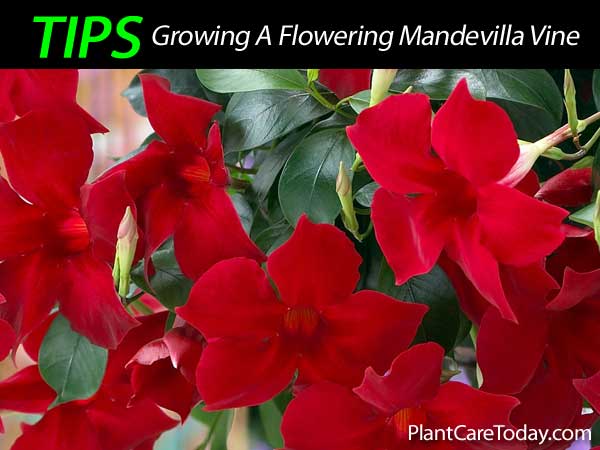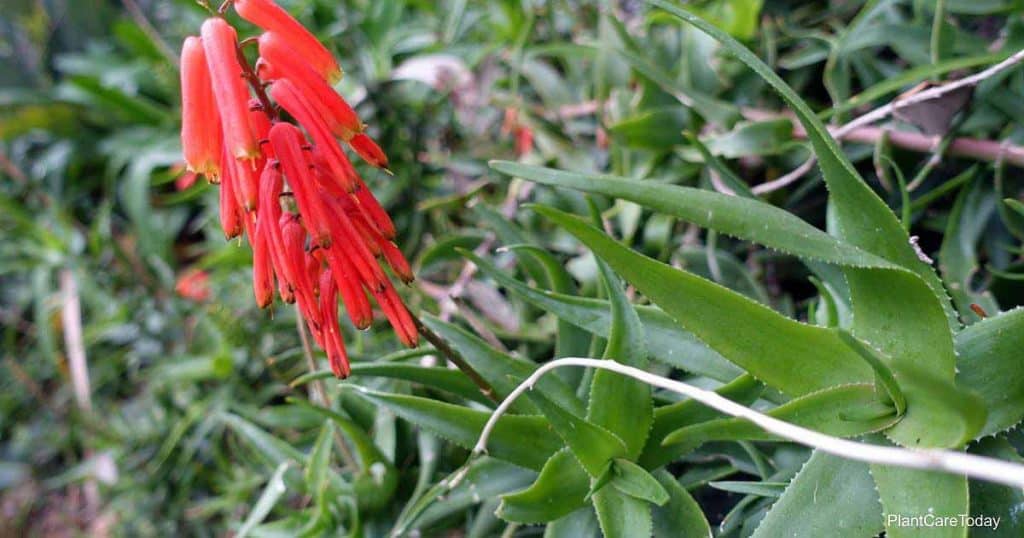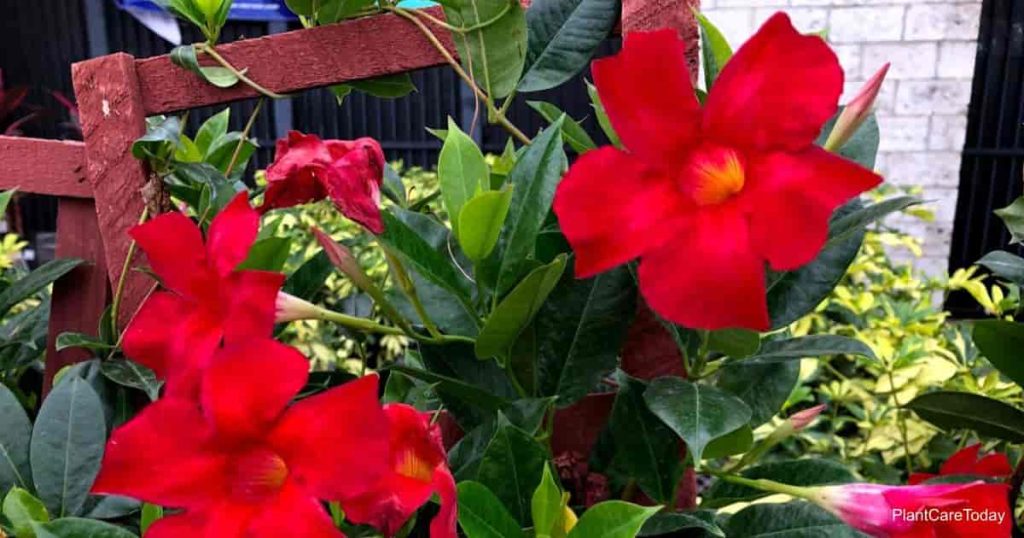Indoors and out, vines perform a variety of functions. While modern gardens are typically smaller than in the past, with less space for trees and huge plants, vines have grown in popularity.

Vines can be pruned and shaped to fit any space and trained into espalier forms. They are also used to cover trellises, arbors, screens, and so on. They are also good groundcovers. Additionally, they are perfect for greenhouses and heated porches.
If given the room and the proper conditions, certain plants can even flourish in the average home.
Consider the location when choosing vines. In some circumstances, rapid growth is a nuisance. Or a specific vine may be too small and delicate for a particular setting.
It is also essential to understand its culture, growth habits, pruning demands, and flowering season to choose an appropriate plant.
The following is an attempt to provide some answers to some of these questions:
Indoors and out, vines perform a variety of functions. While modern gardens are typically smaller than in the past, with less space for trees and huge plants, vines have grown in popularity.
Vines can be pruned and shaped to fit any space and trained into espalier forms.
They are also used to cover arbors, trellises, screens, and so on. They are also good groundcovers. Additionally, they are perfect for greenhouses and heated porches.
If given the room and the proper conditions, certain plants can even flourish in the average home.

Consider the location when choosing vines. In some circumstances, rapid growth is a nuisance. Or a specific vine may be too small and delicate for a particular setting.
It is also essential to understand its culture, growth habits, pruning demands, and flowering season to choose an appropriate plant.
The following is an attempt to provide some answers to some of these questions:
Flowering Mandevilla Vine
The flowering Mandevilla plant like the hybrid Alice du Pont is a true pink-flowering delight descended from a native of South America and named after Harrv J. Mandeville, a British minister to Argentina. It needs a mild climate, and it is tender.

The clear pink 2” to 4” inch funnel-shaped flowers have a vivid crimson throat and bloom in loose clusters throughout the summer. Individual flowers are long-lasting and are framed by semi-evergreen dark, glossy-green, leathery, deeply veined foliage.
In the winter, the vine loses some of its leaves.
Mandevilla thrives in full sun along the coast but requires partial shade inland. They reach a height of 20’ to 40’ feet when grown in pots or tubs.
Twining stems require support and should be tied to ensure proper growth pattern development. Pruning practices such as thinning or cutting back should be carried out during warm weather.

To achieve the best results, plant this vine high in a fast-draining, rich soil that receives plenty of water. Annually in the fall, manure and leaf mold may be applied, while commercial fertilizer may be applied in the spring and summer.
It should be grown under glass or moved indoors during the winter in colder climates. Even plants as small as four-inch pots will bloom.
Check out Dipladenia Care it looks similar to Mandevilla.
Lonicera Bildebrandtiana – Burmese Honeysuckle
The giant Burmese honeysuckle, Lonicera bildebrandtiana, is a fast-growing vine with many ropelike stems and 4″ to 6″ inch long green leaves. Under ideal conditions, the vine can grow up to 40′ to 60′ feet tall through twining stems and is best trained horizontally, grown as an espalier on heavy wires.

In warm weather, it can be pruned almost continuously; in cold weather, it cannot be pruned at all. Aromatic, yellow flowers appear all year round, with the most flowers appearing in the summer and autumn.
When the 7-inch flowers open, they are creamy-white. They then turn yellow and then orange-red before falling and being replaced by the attractive 1”-inch green fruits.
In subtropical areas such as California and Florida, this plant grows quickly and requires little care. It may freeze at temperatures below 24° degrees Fahrenheit, but it will re-grow from the roots.
It tolerates nearly any soil type but thrives in a rich, moist, well-drained loam in sun or shade. It does not tolerate arid conditions or strong winds. Obviously, it is large for home greenhouses and conservatories.
Other Lonicera Varieties:
Hibbertia Volubilis Guinea gold vine
Hibbertia volubilis (Hibbertia scandens) is often sold as the Guinea gold vine.
It is an evergreen with glossy, waxy leaves that provide a lush backdrop for the dainty bright lemon-yellow funnel-shaped flowers that bloom in late spring and early fall and measure 2 12″ inches in diameter.
It has dense, well-branched stems that twine or trail 10′ to 30′ feet. It may be trained on a trellis, fence, or screen.
Additionally, it can be used as a groundcover or grown in containers. It will eventually completely cover a screen or support.
After flowering, the canes should be cut back to 15′ feet, and the growth should be thinned out yearly.
Hibbertia grows well in partial shade, but it also grows well in direct sunlight.
Give it a moist, well-drained, sandy loam with leaf mold for the best results; a sheltered, warm location; and a hosing-off of leaves in dry, warm weather.
Avoid temperatures below freezing, an arid or semi-arid climate, and reflected heat, such as from south-facing walls.
It thrives in California, Florida, and other warm climates, as well as under glass.
Stephanotis Floribunda Madagascar Jasmine
The Madagascar jasmine, Stephanotis floribunda, is a wonderful houseplant or indoor-outdoor plant that can withstand temperatures down to 55° degrees Fahrenheit in the winter.

Bridal bouquets frequently feature white, waxy, extremely fragrant flowers that resemble orange blossoms.
This plant is always neat and clean, grows slowly, and is well suited to a pot and tub culture.
Flower clusters develop in the leaf axils along with the ropelike growth that can be trained on a trellis or over a wall (on wires), up a roof, or on lamp posts.

Around October, begin withholding water from the roots and discontinue syringing, which is beneficial during the growth period.
Water is enough to keep the leaves from shriveling.
Warmth, bright light but not direct sunlight, light feeding, generous watering, sandy loam with leaf mold, shade, and protection from wind and frost are all requirements.
Feeding and pruning should be done only when the weather is warm.
Beaumontia Grandiflora Easter Lily Vine

The Easter lily vine, Beaumontia grandiflora, has large, startlingly gorgeous white blossoms in clusters that resemble Easter lilies.
- The flowers are 5″ inches wide and have the same depth, and they bloom from May until late September.
- Long, heavily veined, glossy green foliage provides a rich backdrop for the flowers.
- It needs assistance as a vine because of its rapid growth, but it can also be pruned as a shrub or trained as an espalier.
- It can be utilized to frame double-door garages, create a sunny side of a patio screen, or clamber up to a second-story balcony.
- Cut back after flowering to encourage lateral development for next season’s bloom.
Flowers do not grow on new wood, so leave some two and three-year-old wood. Give it full sun, rich loamy soil, and plenty of water.
Thunbergia Grandiflora Blue Sky Flower
Blue is a rare color in flowers, but it can be found in the blue sky flower, Thunbergia Grandiflora, named after Karl Thunberg, a botany professor at Upsala University in Sweden.

The vine itself is an Indian native and is sometimes marketed as blue allamanda. There is also Thunbergia Grandiflora alba, which has white flowers.
Thunbergias require a lot of roots and growing space. They can grow to be 30 to 50 feet tall and are severely pruned to avoid flowering. (fix ending)
The blue sky flower blooms profusely and looks best against a broad wall; a long fence; or a dense screen, where its mass of blue 3-inch flowers creates a showy, dramatic display from late summer to Christmas.
Thunbergias may take months to adjust after being planted for the first time, but they then begin to grow very quickly.
The vine thrives in a warm, mild coastal climate where it can receive full sun.
It handles semi-arid and arid conditions if protected from strong winds and given enough shade and water.
If the top freezes (thunbergia tolerates temperatures as low as 28° degrees), it will send out new shoots in the spring.
Grow this vine in a well-drained, deep, moist, porous soil that has been amended with leaf mold and manure. To keep it in check, prune it after it blooms once a year.
Aloe Ciliaris Climbing Aloe
The climbing aloe (Aloe Ciliaris) is a unique plant that draws a lot of attention. It is a member of the lily family and is botanically referred to as Aloe Ciliaris.
In fact, it is not a true vine but a climbing plant.

The flower spike resembles a miniature red Christmas tree and remains upright regardless of how the stem is positioned.
The flowers open sequentially from the base to the tip, resulting in an extended blooming period.
Flower spikes grow to a height of 8 inches and are made up of bright red cylindrical tubes with greenish tips.
Unless supported, the perennial vine’s pencil-thick stems can reach a height of ten feet. The leaves range in length from 3” to 6” inches, are 1- ½” inches wide, and have coarse teeth.
Aloes are sun-lovers and thrive in direct sunlight, though they do require some shade, particularly at the roots. It should not be planted in an exposed location or in areas that are subject to frost or harsh winter winds.
This vine can be grown in the same pot for many years and will continue to flower.
Good soil is a fairly rich, porous, sandy loam that has been amended with leaf mold and bonemeal. However, the aloe will grow in poor soil, and mature plants will rot in moist soil.
Bauhinia Gaipini
Bauhinia gaipini is a half-climbing, vining shrub that grows 5’ to 10’ feet tall in southern California, Hawaii, Arizona, Florida, and other warm climates. It’s a nice accent plant and also works well as a screen.
The blooms are unusually shaped, with petals that are thin at the base and are brick-red to orange in color. They bloom in large clusters every year, from spring to autumn.
The kidney-shaped, light green leaves, which range in size from 1 to 3 inches, are also uncommon. It can be especially effective on a south-facing fence.
The vines are typically preserved from frost by banking or mounding them against the cold.
A rich soil, as well as sun or partial shade, wind and frost protection, and warm, wet, well-drained soil are desired.
Cane lengths should be pruned out in the early spring.
Aristolochia Elegans Calico Flower
The calico flower, Aristolochia elegans, is our final vine, and it belongs to the same family as the Dutchman’s pipe.

The calico flower has a pale yellow tube that opens to reveal a brownish-purple throat and a flared beautifully veined magenta-red corolla.
The flowers are hung singly from slender stems and are encircled by 2” to 3” inch bright-green heart or kidney-shaped leaves.
This Aristolochia prefers a warm climate with rich, moist, well-drained soil and shelter from strong winds and cold.
It is possible to grow it from seed. It can be grown over a porch, gazebo, or similar structure.

